Experience the allure of Malta – where history, culture, and natural beauty converge for an unforgettable Mediterranean escape.
Nestled in the heart of the Mediterranean Sea lies a gem waiting to be explored – Malta. This enchanting archipelago, comprised of the main islands of Malta, Gozo, and Comino, beckons travelers with its rich chapters of history, vibrant culture, and breathtaking landscapes. From ancient temples dating back millennia to azure waters teeming with marine life, Malta offers a captivating blend of past and present, making it a playground for adventurers, history buffs, and sun-seekers alike.
In this blog, we guide you on a journey of discovery through Malta, uncovering its fascinating heritage, highlighting its scenic wonders, and providing valuable tips for an unforgettable Mediterranean escape. Whether you’re drawn to explore the labyrinthine streets of Valletta, dive into the crystal-clear waters of the Blue Lagoon, or savor the flavors of traditional Maltese cuisine, there’s something here to enchant every traveler. So, join us as we delve into the allure of Malta, where history, culture, and natural beauty converge to create an unforgettable experience.
- Where is Malta? Geographical Location in the Mediterranean Sea
- Size and Population of Malta
- History of Malta
- Sea Adventures in Malta
- Cities and Towns of Malta
- Transportation in Malta
- Safety in Malta for Senior Tourists
- Unique Facts about Malta
- Language of Malta
- Recommended Hotels in Malta
- Introduction to Maltese Cuisine
- Conclusion
- Frequently Asked Questions
Where is Malta? Geographical Location in the Mediterranean Sea
Located at the crossroads of Europe, Africa, and the Middle East, Malta is a small archipelago nestled in the heart of the Mediterranean Sea. Situated south of Sicily, Italy, and north of the coast of North Africa, Malta enjoys a strategic position that has shaped its history and culture for millennia.
The main island of Malta, along with its sister islands of Gozo and Comino, form the Maltese archipelago. Despite its small size, Malta boasts a diverse landscape characterized by rugged cliffs, golden beaches, and fertile valleys, all framed by the sparkling blue waters of the Mediterranean.
For travelers eager to explore beyond Malta’s shores, island-hopping excursions to Gozo and Comino offer a chance to discover even more of the archipelago’s beauty.
The strategic location of Malta has made it a prized possession throughout history, coveted by empires and civilizations seeking to control trade routes and maritime dominance. Today, its central position makes it easily accessible from mainland Europe, with regular flights and ferry connections linking it to major cities across the continent.
Size and Population of Malta
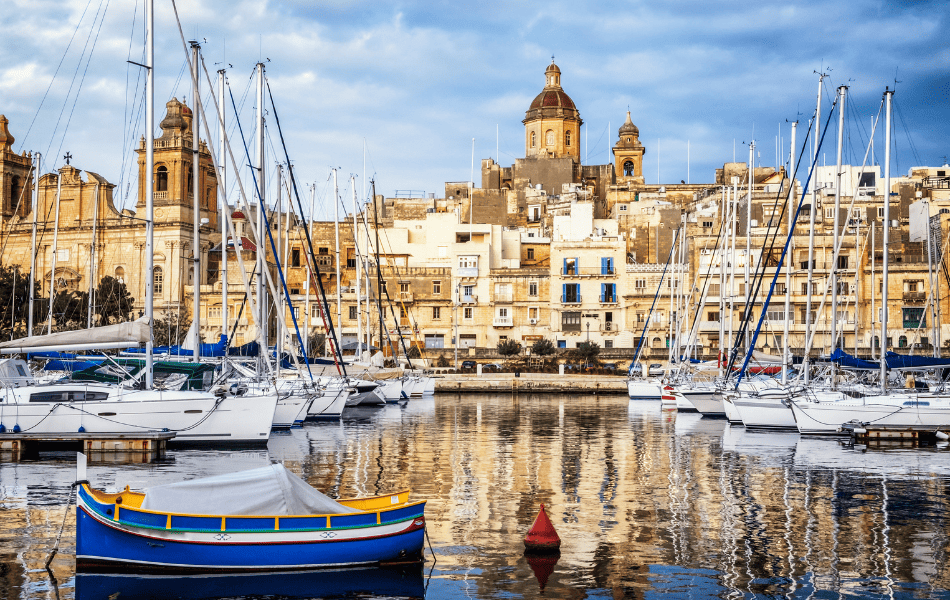
Malta, a small but vibrant archipelago in the Mediterranean Sea, comprises three main islands: Malta, Gozo, and Comino. The largest among them is the island of Malta itself, which serves as the cultural and economic hub of the nation. Gozo, known for its rural charm and historical sites, lies to the northwest of Malta, while the tiny island of Comino, famed for its secluded Blue Lagoon, rests between its larger counterparts.
In terms of size, Malta covers an area of approximately 316 square kilometers (122 square miles), making it one of the world’s smallest countries by land area. Gozo, by comparison, is significantly smaller, spanning around 67 square kilometers (26 square miles), while Comino is just a fraction of that size, measuring a mere 3.5 square kilometers (1.4 square miles).
Despite their modest dimensions, the Maltese islands are home to a bustling population that reflects their rich history and cultural diversity. As of the latest estimates, Malta boasts a population of over 500,000 people, with the majority residing on the main island. Gozo supports a smaller population, while Comino remains largely uninhabited, save for a handful of residents and visitors who flock to its pristine shores during the summer months.
History of Malta
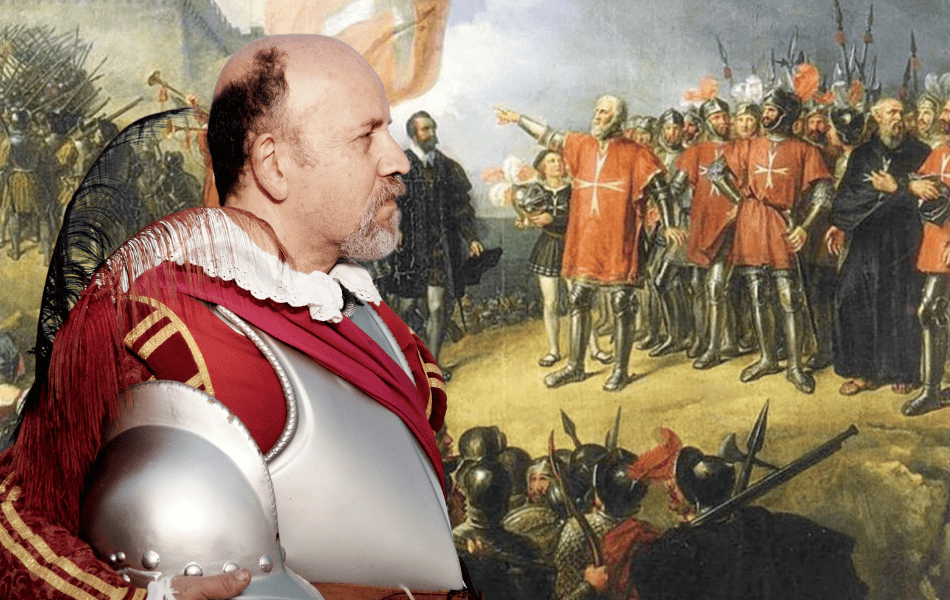
The history of Malta is a captivating journey through time, spanning thousands of years and shaped by the ebb and flow of civilizations that have left their mark on these storied islands.
Malta’s earliest inhabitants date back to around 5200 BC, as evidenced by the remarkable Megalithic Temples, some of the oldest free-standing structures in the world. These awe-inspiring temples, such as Ġgantija on Gozo and Ħaġar Qim on Malta, stand as a testament to the ingenuity and craftsmanship of Malta’s prehistoric settlers, who built these monumental structures for ceremonial purposes.
Throughout antiquity, Malta’s strategic location made it a prized possession for various empires and civilizations, including the Phoenicians, Carthaginians, Romans, and Byzantines. However, it was the arrival of the Knights of St. John in the 16th century that would leave an indelible mark on Malta’s history.
In 1530, the Knights Hospitaller were granted sovereignty over Malta by Emperor Charles V of Spain, establishing their headquarters on the island and transforming it into a formidable fortress against Ottoman expansion in the Mediterranean. The Great Siege of Malta in 1565, during which the Knights successfully repelled a massive Ottoman invasion, solidified Malta’s reputation as the “Fortress of the Knights” and earned the islanders enduring admiration and respect.
One of the crowning achievements of the Knights’ rule was the construction of Valletta, a fortified city renowned for its architectural splendor and strategic importance. Designated a UNESCO World Heritage Site, Valletta’s historic center is a treasure trove of Baroque architecture, grand palaces, and ornate churches, offering visitors a glimpse into Malta’s golden age of chivalry and grandeur.
Today, Malta stands as a testament to its rich and storied past, with a wealth of historical sites and landmarks waiting to be explored. From the ancient temples of Ġgantija to the majestic fortifications of Valletta, Malta’s history is etched into every stone, inviting travelers to embark on a journey through time and discover the enduring legacy of this remarkable island nation.
Sea Adventures in Malta
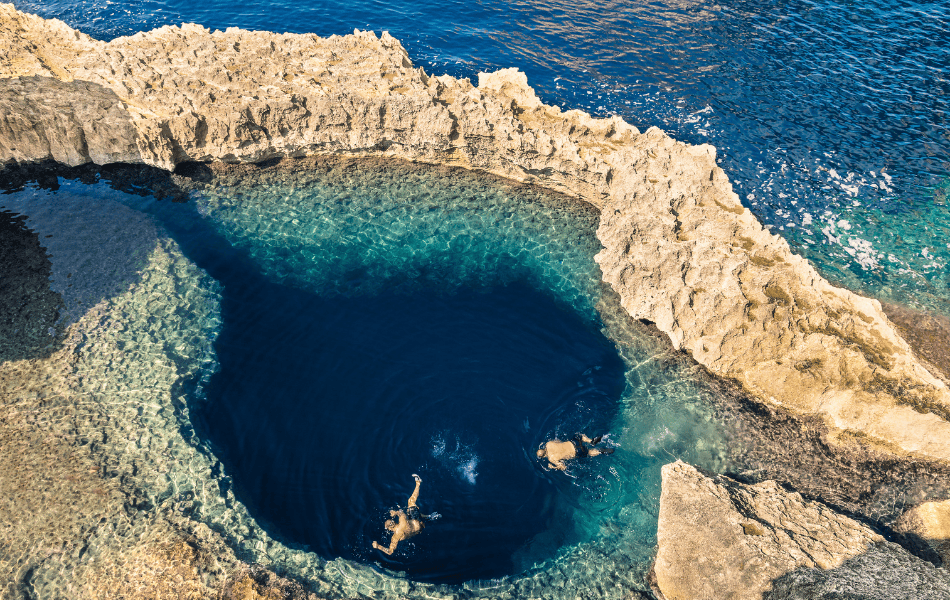
One of the most captivating aspects of a visit to Malta is the opportunity to immerse oneself in the crystal-clear waters of the Mediterranean Sea. With its azure blue hues and abundant marine life, Malta’s coastline offers a playground for sea enthusiasts of all ages.
For sun-seekers and water lovers, don’t miss out on exploring Malta’s stunning beaches, each offering its unique beauty and charm.
Snorkeling
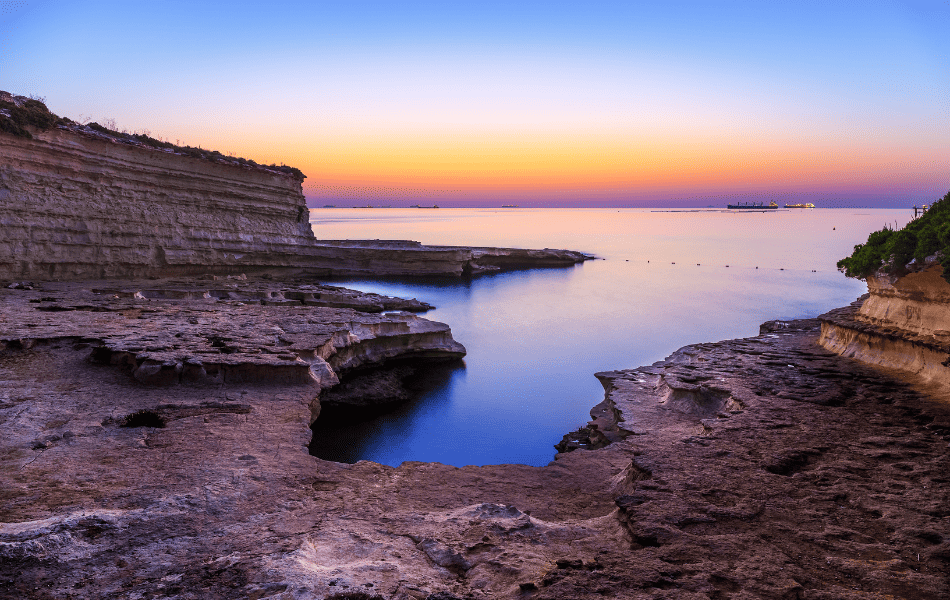
Venturing beneath the surface reveals a vibrant underwater world teeming with colorful fish, coral reefs, and hidden treasures. Snorkeling is a popular activity along Malta’s rocky shores, allowing visitors to explore secluded coves, shallow reefs, and hidden grottos. St. Peter’s Pool in Marsaxlokk is a renowned snorkeling spot, offering calm, clear waters and mesmerizing underwater landscapes to discover.
Diving
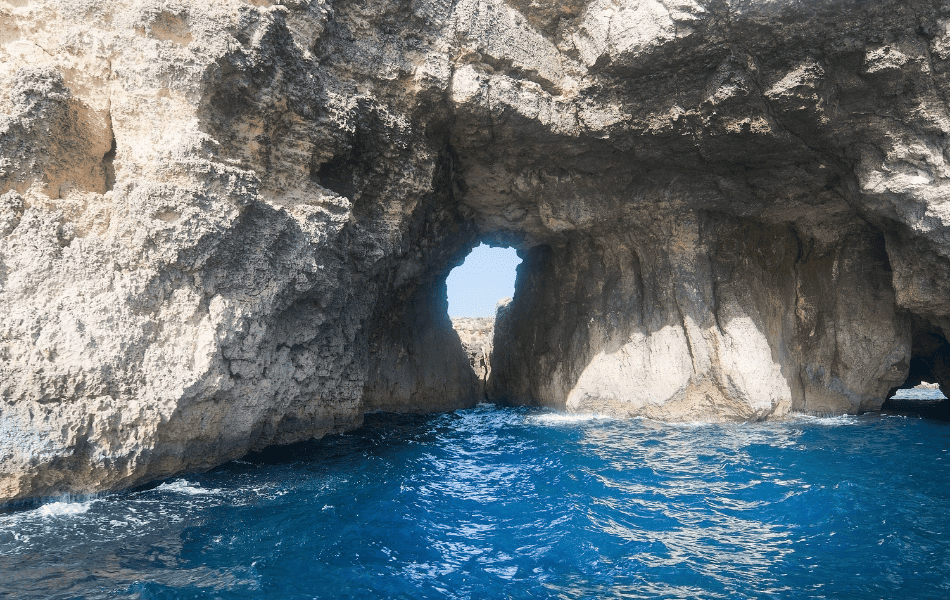
For those seeking a deeper adventure, Malta’s rich maritime history and diverse marine ecosystems make it a premier diving destination. From ancient shipwrecks to underwater caves and tunnels, there’s no shortage of underwater wonders to explore. Comino’s caves, with their intricate formations and kaleidoscopic hues, are a favorite among divers, while the Blue Lagoon’s turquoise waters provide an idyllic backdrop for underwater exploration.
For those cave hunters, consider exploring Malta’s fascinating caves and tunnels with guided caving tours.
Boat Trips
To fully appreciate Malta’s coastal beauty, a boat trip is a must. Whether it’s a leisurely cruise around the islands, a thrilling speedboat ride, or a sailing excursion to hidden coves, there are endless ways to experience Malta’s maritime splendor from the deck of a boat. The Blue Lagoon, with its tranquil waters and stunning natural scenery, is a popular destination for boat trips, offering opportunities for swimming, sunbathing, and snorkeling in one of Malta’s most iconic settings.
Whether you’re gliding through the sea on a snorkeling adventure, diving into the depths to explore underwater wonders, or simply relaxing on the deck of a boat as you soak in the breathtaking views, Malta’s sea adventures promise unforgettable experiences for all who venture on them.
Cities and Towns of Malta
Malta’s cities and towns are as diverse and captivating as the island’s rich history and stunning landscapes. From ancient fortified cities to charming fishing villages, each destination offers its unique charms and attractions, inviting visitors to explore the island’s cultural heritage and natural beauty.
Valletta
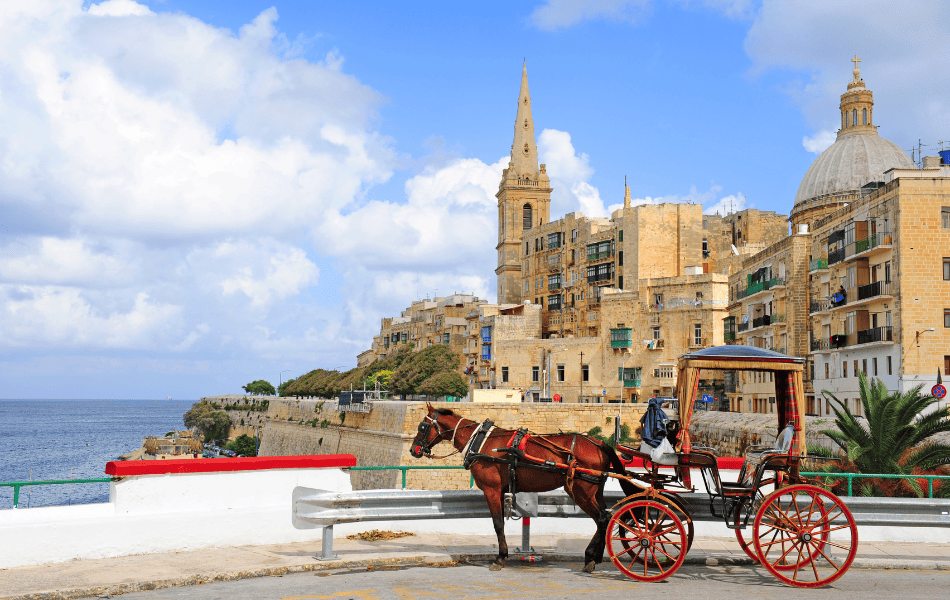
As the capital city of Malta and a UNESCO World Heritage Site, Valletta is a treasure trove of history, culture, and architectural splendor. Built by the Knights of St. John in the 16th century, Valletta’s fortified walls enclose a maze of narrow streets, grand palaces, and ornate churches, including the iconic St. John’s Co-Cathedral. With its vibrant arts scene, bustling markets, and panoramic views of the Grand Harbour, Valletta is a must-visit destination for history buffs and culture enthusiasts alike.
Mdina
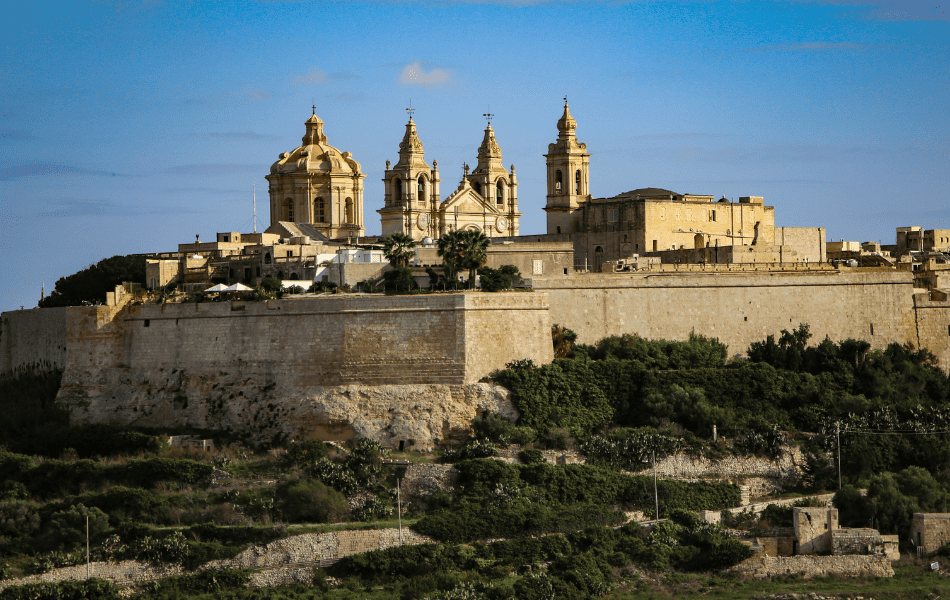
Known as the “Silent City,” Mdina is a medieval fortress perched atop a hill in the heart of Malta. Stepping through its ancient gates is like stepping back in time, as visitors wander through labyrinthine streets lined with palaces, churches, and historic mansions. From the panoramic views of the surrounding countryside to the atmospheric charm of its cobblestone alleys, Mdina offers a glimpse into Malta’s storied past.
Marsaxlokk
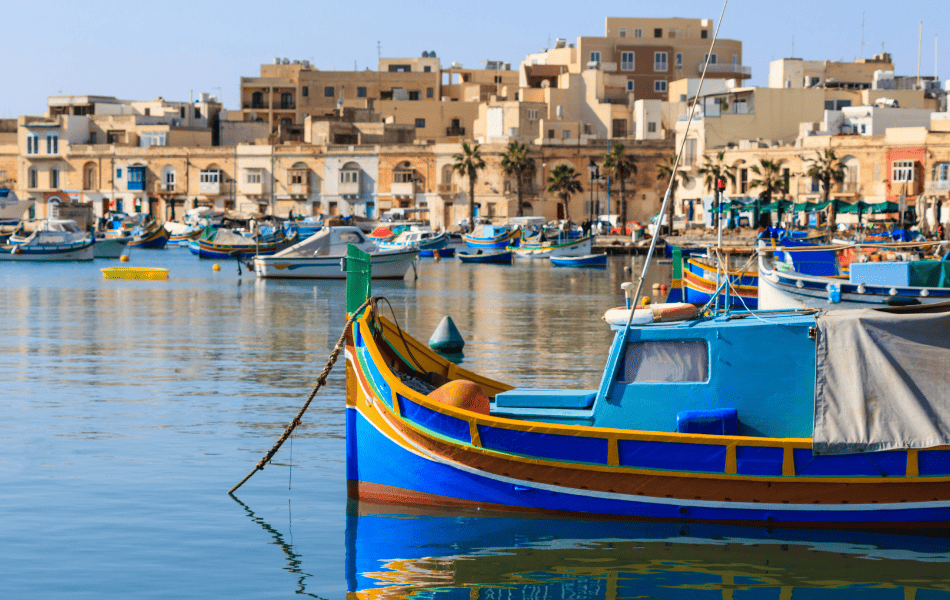
For a taste of traditional Maltese life, look no further than Marsaxlokk, a picturesque fishing village located on the southeastern coast of Malta. Famous for its colorful fishing boats, lively fish market, and waterfront restaurants serving fresh seafood, Marsaxlokk exudes a laid-back charm that captures the essence of Mediterranean island life. Visitors can stroll along the promenade, sample local delicacies, or simply soak in the tranquil atmosphere of this charming seaside village.
Gozo
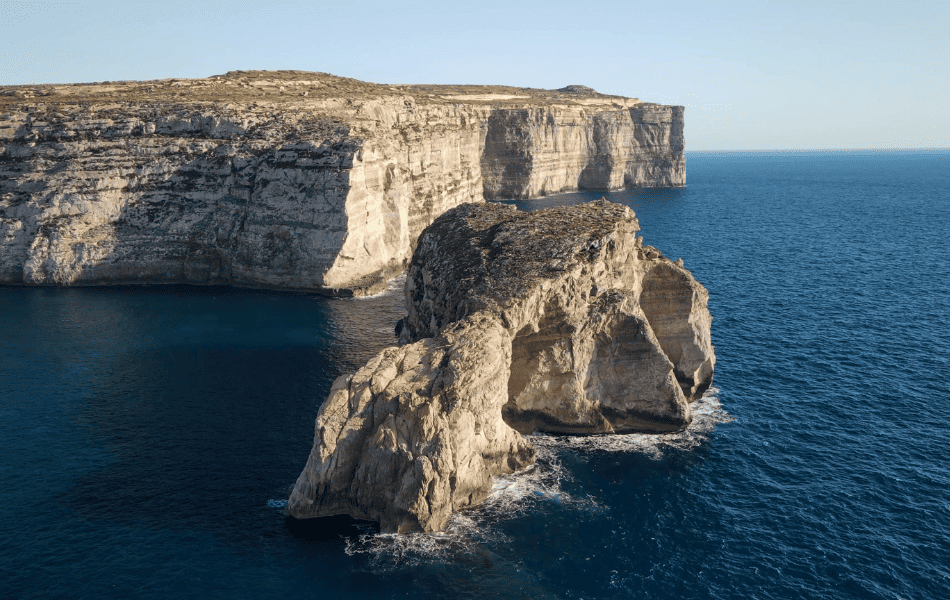
Across the shimmering waters of the Mediterranean lies the island of Gozo, a tranquil oasis renowned for its natural beauty and rural charm. From the ancient citadel of Victoria to the stunning coastal cliffs of Dwejra, Gozo offers a wealth of attractions for outdoor enthusiasts and nature lovers. With its unspoiled countryside, pristine beaches, and quaint villages, Gozo is the perfect destination for those seeking a peaceful retreat away from the hustle and bustle of city life. For nature lovers seeking hidden gems, consider adding waterfall hikes to your itinerary for a refreshing escape into Malta’s lush valleys.
Whether you’re exploring the historic streets of Valletta, wandering through the medieval alleys of Mdina, savoring fresh seafood in Marsaxlokk, or discovering the natural wonders of Gozo, Malta’s cities and towns promise unforgettable experiences for travelers seeking to immerse themselves in the island’s rich culture and natural beauty.
Transportation in Malta

Malta’s compact size and well-developed infrastructure make it easy for tourists to explore the islands using a variety of transportation options.
International Airport
Malta International Airport (MLA) serves as the main gateway to the archipelago, welcoming flights from major cities across Europe and beyond. Located just outside the capital city of Valletta, the airport offers convenient access to Malta’s top attractions and resorts.
Public Transport
For travelers looking to explore Malta’s cities, towns, and attractions, the island’s public bus system provides an affordable and efficient option. Managed by Transport Malta, the extensive network of buses connects major hubs such as Valletta, Sliema, and St. Julian’s, making it easy to navigate the island without the need for a car. Visitors can purchase single tickets or multi-day passes from kiosks or directly from the driver.
Car Rentals
For those wishing to explore Malta at their own pace, car rentals are readily available at Malta International Airport and in major tourist areas. With well-maintained roads and clear signage, driving in Malta is relatively straightforward, allowing visitors to access remote beaches, historic sites, and picturesque villages with ease. However, it’s essential to familiarize yourself with local traffic regulations and parking restrictions before hitting the road.
Whether you prefer the convenience of public transport, the flexibility of a rental car, or hiking around on foot, Malta offers transportation options to suit every traveler’s needs, ensuring a seamless and enjoyable experience exploring the islands’ rich cultural heritage and natural beauty.
Safety in Malta for Senior Tourists
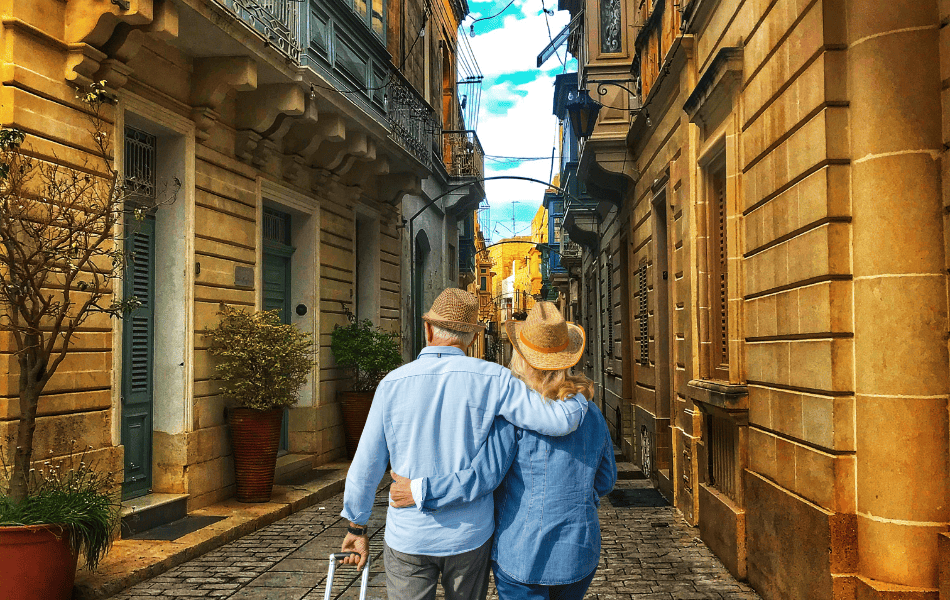
Malta is generally considered a safe destination for senior tourists, offering a tranquil and welcoming environment that encourages exploration and relaxation. With its low crime rate and hospitable locals, visitors can feel at ease while enjoying the island’s rich cultural heritage and natural beauty. However, as with any travel destination, it’s essential for senior tourists to take some precautions and considerations to ensure a safe and enjoyable experience.
One consideration for senior travelers is the terrain, as Malta’s historic cities and towns are characterized by narrow cobblestone streets and uneven surfaces that may pose challenges for those with mobility issues. It’s advisable to wear comfortable footwear (I am mad about Sketches) and plan leisurely strolls to avoid fatigue or discomfort. Additionally, some historical sites and attractions may have limited accessibility, so it’s wise to research in advance and inquire about accommodations for seniors.
Another important consideration is the Mediterranean climate, which can be quite hot and sunny, especially during the summer months. Senior tourists should take precautions to protect themselves from the sun by wearing hats, sunglasses, and sunscreen, and staying hydrated throughout the day. Seeking shade during the hottest hours and scheduling outdoor activities during the cooler mornings or evenings can also help prevent heat-related issues.
While Malta is generally safe, senior tourists should remain vigilant and take common-sense precautions to avoid petty theft and scams, such as keeping belongings secure and avoiding unfamiliar or poorly lit areas, especially at night. It’s also a good idea to carry a copy of important documents, such as passports and travel insurance information, and to stay informed about local safety advisories or updates.
By taking these precautions and considerations into account, senior tourists can enjoy a safe and memorable experience exploring the cultural treasures, scenic landscapes, and warm hospitality that Malta has to offer.
Unique Facts about Malta
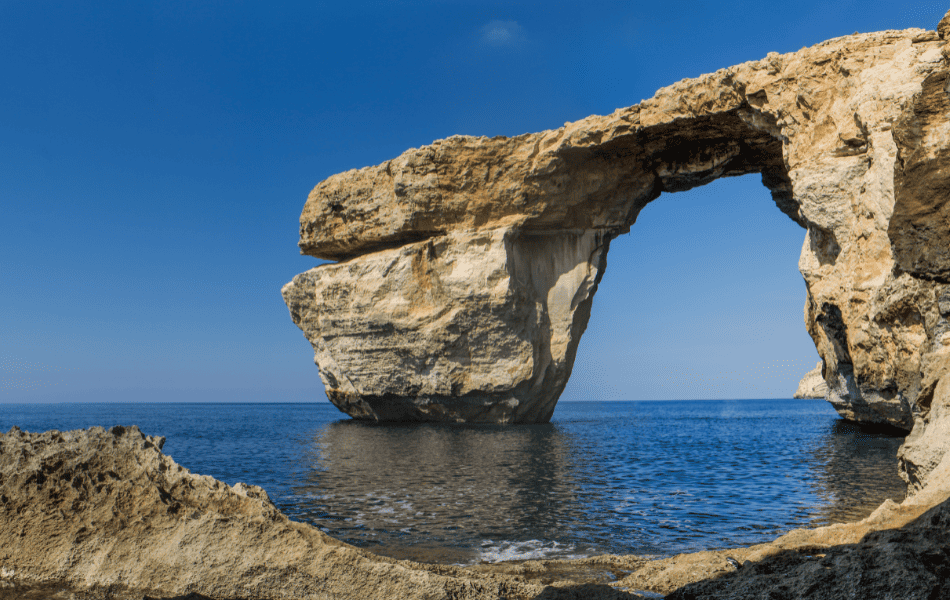
- Megalithic Marvels: Malta is home to some of the world’s oldest freestanding structures, the Megalithic Temples, which predate the Egyptian pyramids and Stonehenge, showcasing the island’s rich archaeological heritage.
- Language Fusion: Malta boasts a unique linguistic blend, with Maltese being the only Semitic language written in Latin script. English is also widely spoken and considered an official language alongside Maltese.
- Underground Wonderland: Beneath the surface of Malta lies an intricate network of catacombs, tunnels, and underground shelters, reflecting centuries of human habitation and providing a fascinating glimpse into the island’s subterranean history.
- Knights’ Legacy: Malta’s history is intertwined with the legacy of the Knights of St. John, who established the island as their stronghold in the 16th century. Their influence is evident in the numerous fortifications, palaces, and churches that still dot the landscape today.
- Prehistoric Potency: The Maltese Islands are home to the Ħal Saflieni Hypogeum, a UNESCO World Heritage Site and one of the world’s best-preserved prehistoric underground temples, dating back over 5,000 years.
- Gozo’s Giant: The picturesque island of Gozo is said to be the mythical home of Calypso, the nymph in Homer’s Odyssey who held Odysseus captive for seven years. The legendary tale adds an extra layer of intrigue to Gozo’s tranquil landscapes and coastal charms.
- Movie Magic: Malta’s stunning scenery and historic architecture have attracted filmmakers from around the world, with the island serving as a backdrop for blockbuster films and TV shows, including “Gladiator,” “Game of Thrones,” and “Assassin’s Creed.”
- Azure Window’s Fate: The iconic Azure Window, a natural limestone arch on the island of Gozo, was a beloved landmark until its collapse in 2017. Despite its demise, the site remains a symbol of Malta’s natural beauty and geological wonders.
- Beehive Huts: The rural village of Qrendi is home to Ta’ Ħaġrat and Skorba, two of Malta’s oldest prehistoric sites featuring ancient bee-hive-shaped huts, offering insight into Neolithic life on the island.
- Festive Spirit: Malta’s calendar is filled with colorful festivals and celebrations, including religious feasts, carnival parades, and traditional folk events, providing visitors with a vibrant cultural experience year-round.
Language of Malta

Maltese, the official language of Malta, blends Semitic and Romance influences and is written in Latin script. English, also official, is widely spoken and understood, reflecting Malta’s colonial history and global connections. The linguistic duality contributes to Malta’s cosmopolitan atmosphere and facilitates communication for locals and visitors alike.
Recommended Hotels in Malta
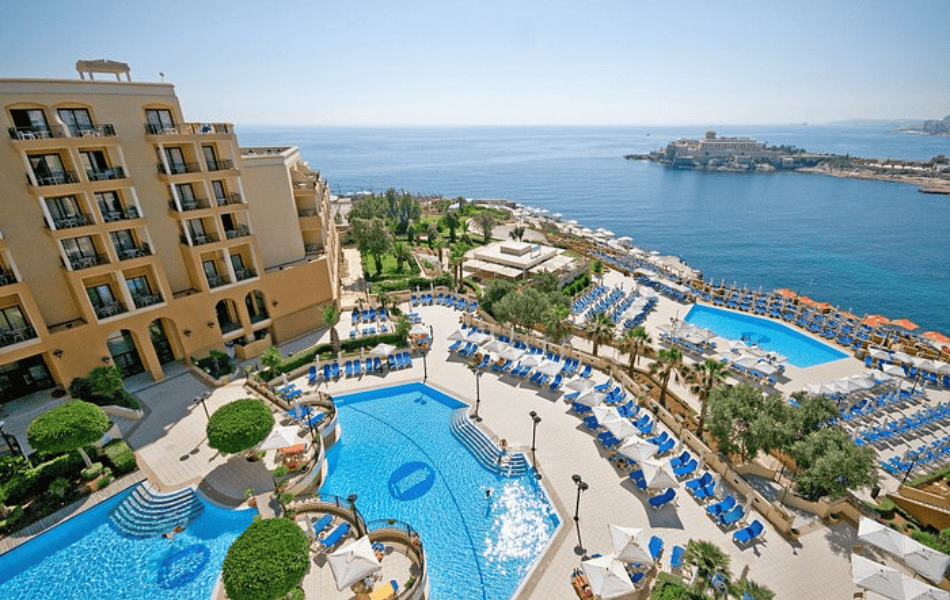
Three highly recommended hotels to consider for your stay in Malta
The Phoenicia Malta: Situated just outside the fortified walls of Valletta, The Phoenicia Malta offers luxurious accommodations with panoramic views of the city and the harbor. With its elegant rooms, fine dining options, and impeccable service, it’s an ideal choice for discerning travelers seeking a refined experience.
Hotel Juliani: Nestled along the waterfront promenade of Spinola Bay in St. Julian’s, Hotel Juliani combines contemporary style with personalized hospitality. Its boutique atmosphere, rooftop pool, and sea view rooms make it a popular choice for those looking to explore Malta’s vibrant nightlife and coastal attractions.
Corinthia Hotel St. George’s Bay: Located on the picturesque St. George’s Bay in St. Julian’s, Corinthia Hotel St. George’s Bay offers a luxurious retreat with direct access to the beach and stunning views of the Mediterranean Sea. With its array of amenities, including multiple restaurants, spa facilities, and spacious rooms, it provides an indulgent escape for travelers seeking relaxation and comfort.
Introduction to Maltese Cuisine

Maltese cuisine reflects the island’s rich history and cultural influences, blending Mediterranean flavors with elements of North African and Sicilian cuisine. Fresh seafood, hearty stews, and rustic breads are staples of Maltese cooking, showcasing the island’s bountiful land and sea.
Must-Try Dishes
- Fenkata: A traditional Maltese rabbit stew, fenkata is a hearty dish slow-cooked with garlic, wine, and herbs, resulting in tender meat and rich flavors.
- Pastizzi: These flaky pastries filled with either ricotta cheese or a savory mixture of peas and onions are popular snacks enjoyed throughout Malta.
- Ħobż biż-żejt: A simple yet delicious dish, ħobż biż-żejt features crusty Maltese bread topped with ripe tomatoes, olives, capers, and locally produced olive oil.
- Timpana: This hearty pasta dish consists of macaroni baked with minced meat, eggs, and cheese, encased in a pastry crust, creating a comforting and flavorful meal.
Conclusion
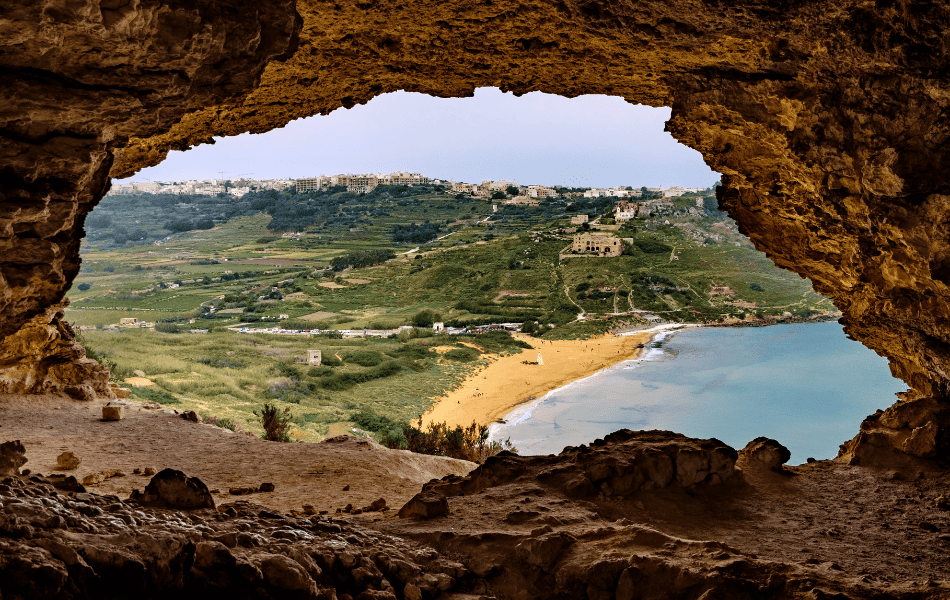
Malta’s allure lies in its unparalleled fusion of ancient wonders, vibrant culture, and stunning landscapes. From the majestic temples to the bustling cities and idyllic beaches, every corner exudes a timeless charm. With its rich history and warm hospitality, Malta promises an unforgettable journey of exploration and enchantment.
Frequently Asked Questions
- What is the weather like in Malta in December?
- In December, Malta experiences mild temperatures ranging from 10°C to 16°C, with occasional rain showers.
- Are there any famous Maltese artists?
- Yes, notable Maltese artists include Antoine Camilleri, Edward Caruana Dingli, and Esprit Barthet.
- What are the best diving spots in Malta for beginners?
- Popular diving sites for beginners in Malta include Cirkewwa, Ċirkewwa Reef, and Anchor Bay.
- Can you visit the Blue Grotto in Malta during winter?
- Yes, the Blue Grotto is accessible year-round, but rough seas during winter may affect boat tours.
- Are there any traditional Maltese festivals in July?
- Yes, one of the most famous traditional festivals in July is the Feast of St. George in Qormi, featuring religious processions, fireworks, and street celebrations.
If you have enjoyed this blog, please LIKE it and SUBSCRIBE.
Recent Posts
Discover insider tips to find cheap flights from the UK, save on easyJet, Ryanair & BA, and score the best weekend and last-minute deals. Why You’re Paying Too Much for Flights Most UK...
Discover the sounds of travel, from laughing kookaburras to market chatter, church bells to ocean waves - a journey heard as much as seen. It always starts with a sound. The other day, walking...

